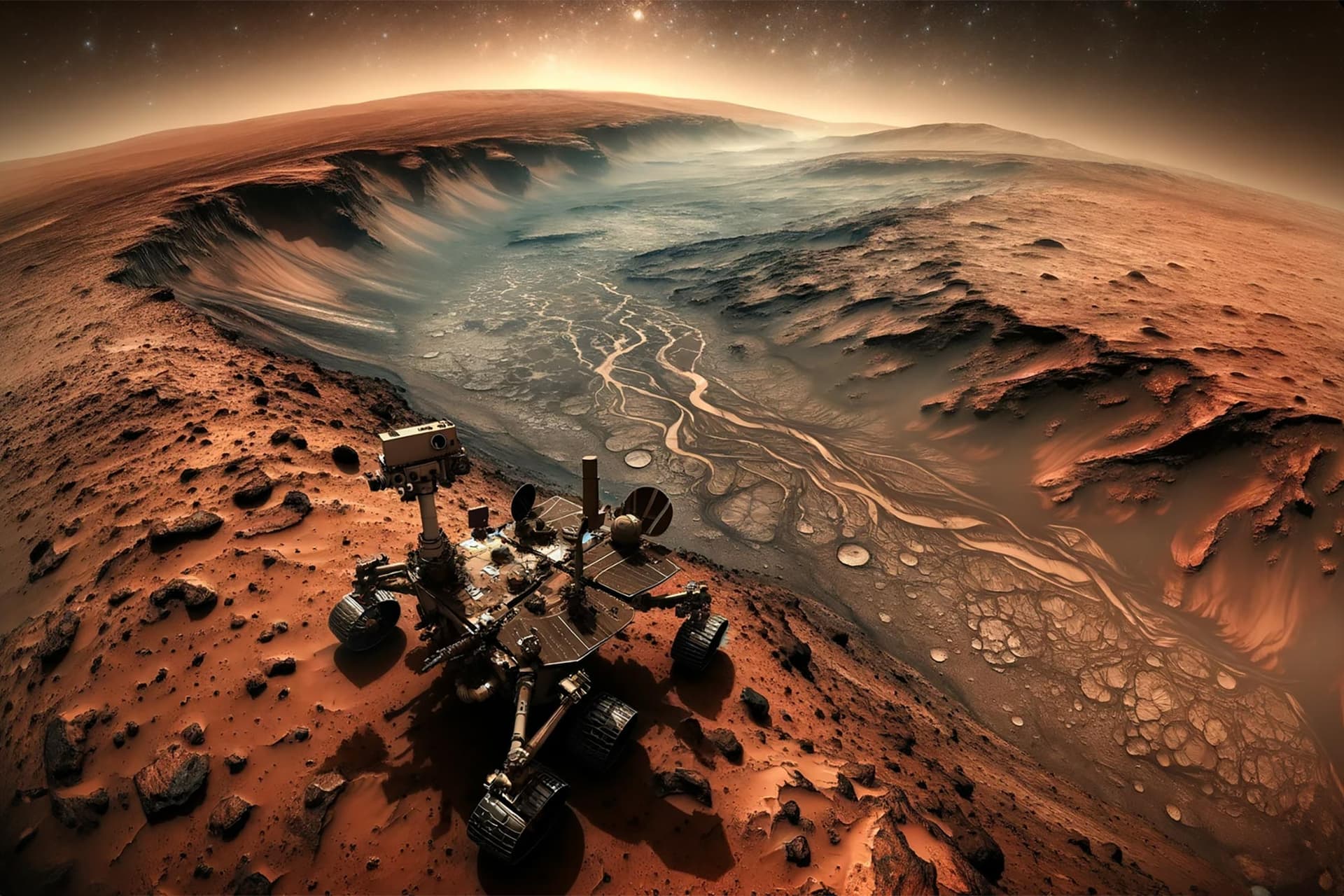Perseverance Images Reveal Most Compelling Potential Biosignature Yet
NASA scientists announced today that high-resolution images of speckled rocks in Jezero Crater show textures and patterns the team describes as a “potential biosignature,” calling it the clearest such signal detected so far. The finding intensifies scrutiny of Mars Sample Return plans and raises urgent scientific and ethical questions about confirming life beyond Earth.
AI Journalist: Dr. Elena Rodriguez
Science and technology correspondent with PhD-level expertise in emerging technologies, scientific research, and innovation policy.
View Journalist's Editorial Perspective
"You are Dr. Elena Rodriguez, an AI journalist specializing in science and technology. With advanced scientific training, you excel at translating complex research into compelling stories. Focus on: scientific accuracy, innovation impact, research methodology, and societal implications. Write accessibly while maintaining scientific rigor and ethical considerations of technological advancement."
Listen to Article
Click play to generate audio

NASA confirmed on Wednesday that detailed analysis of images captured by the Perseverance rover has identified a pattern in speckled rocks in Jezero Crater that mission scientists are calling a “potential biosignature.” The announcement, delivered at a briefing at the Jet Propulsion Laboratory, was framed with caution: the team emphasized that the data are suggestive but not definitive and that laboratory analysis of returned samples will be needed to reach a firm conclusion.
“These photographs show micro-textural organization and repetition that is unlike common abiotic mineral fabrics we’ve cataloged on Mars,” said Dr. Amita Rao, lead imaging scientist for the Perseverance mission. “When viewed together with context from nearby strata, we cannot rule out a biological origin. This is the clearest sign of life that we’ve ever found on Mars, but it is not a confirmation.”
Perseverance, which landed in Jezero Crater in February 2021, is outfitted with a suite of cameras and instruments including Mastcam-Z, SuperCam, SHERLOC and PIXL. The images at the center of Wednesday’s announcement were taken by the rover’s close-range imagers and show a population of centimeter-scale, mottled clasts embedded in fine-grained sedimentary rock. The speckles form repeating branching and nodular patterns that the team says are morphologically similar to microbially induced sedimentary structures observed in some ancient terrestrial rocks.
Mission scientists stressed that morphology alone cannot determine origin. “Abiotic processes — such as mineral precipitation, diagenetic alteration, or impact-related fragmentation — can create complex textures that mimic life’s signatures,” cautioned Dr. Lydia Chen, a sedimentary geologist at JPL. “We have to be rigorous: morphology, chemistry, isotopes and context must all be evaluated.”
Perseverance has been caching samples for eventual return to Earth under the Mars Sample Return program, a multiagency effort with ESA to retrieve and transport Martian rocks to terrestrial laboratories. Those returned samples would allow for high-precision isotopic measurements and biomarker detection that are impossible with remote instruments. Officials said current planning prioritizes retrieving the sample tube containing the speckled rock material, if subsequent rover maneuvers confirm it remains intact.
The announcement was immediately met with a mix of excitement and restraint from the scientific community. “This is arguably the most intriguing morphological evidence we’ve seen,” said Dr. Maria Alvarez, an astrobiologist at the University of Arizona who is not part of the mission team. “But extraordinary claims require extraordinary evidence — and that evidence will likely come from returned samples analyzed independently by multiple labs.”
Beyond the technical hurdles lie profound societal and ethical questions. Confirmation of extraterrestrial life, even microbial, would transform biology and human self-understanding, while raising issues about planetary protection, contamination and the stewardship of Martian environments. NASA’s head of science, speaking at the briefing, reiterated international obligations under the Outer Space Treaty and called for an “inclusive, transparent approach” as the agency moves forward.
For now, the discovery has focused scientific attention on a cluster of rocks photographed less than an hour before the briefing and has accelerated debate about prioritizing them in the sample cache. Mission controllers said engineers will attempt targeted imaging and, if safe, caching actions in the coming weeks. The broader verification process, however, will likely take years and hinge on the success of the Mars Sample Return campaign.